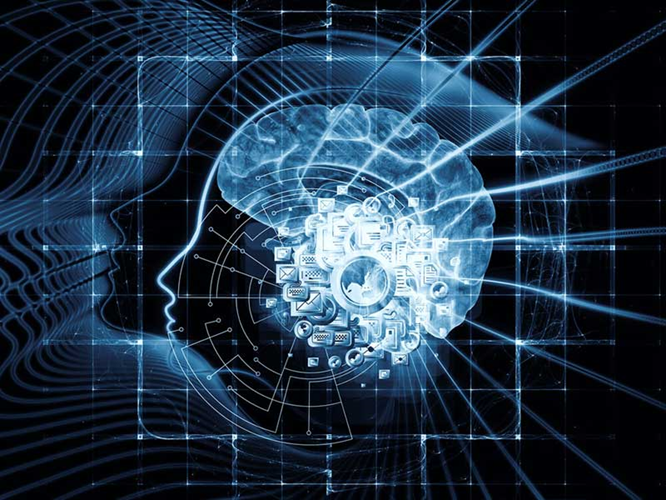|
|
Pentagram Technologies Maintained Under Section 59 of the Indian Partnership Firm Act, 1932 |
|||
|
An Indian Partnership company incorporated at Hyderabad, India in February 11, 2022 Previously known as Pentagram Research Centre Private Limited incorporated in February 27, 1997 |
||||
|
Mission: Better Technology Through Better Research |
||||
|
Home | People | Departments | Products | Projects | Publications | Research | Journal | Conference | Alliance | Contact |
||||
|
|
|
|||
|
Molecular Electronic Devices (MED) |
||||
|
Pentagram Technologies has evolved a paradigm shift in electronic devices called "Molecular Electronics and Symbolic Computing".
Purpose of this project
1. To initiate a unified approach to the study of Molecular Electronic Devices and fabricate what we call as Molecular Processors. 2. Why molecular electronic devices ? 3. Molecular-scale electronic logic structures would occupy an area one million times smaller than analogous logic structures that currently are implemented in micron-scale solid state semiconductor integrated circuits. 4. Molecular electronic devices exhibit immense parallelism 5. Technology of the Future – Technological Revolution ! 6. All semiconductor based devices will be replaced by Molecular devices
Any system, be it silicon based microcomputer or nanodevice based computer, or a molecular computer, would make use of sequential and combinational logic devices for carrying out basic arithmetic, logical and control operations. Mainly, the combinational logic devices are AND, OR, INVERTER gates and the sequential logic devices are the Flip Flops. Any digital circuit could be designed using these devices. For example, digital circuits like adders, timers, counters, registers, multiplexers are realized using the logical gates and flip flops. A digital IC, for instance 7400, which contains quad NAND gates, is made up of billions of silicon atoms. A molecular logical gate, on the other hand, may turn out to be a molecular formula consisting of a dozen molecules, may be some organic ones or biological ones like DNAs. The matter of concern to be noted here is as to how to build such molecule based devices and interconnect them.
Project Impact
Technical Benefits MERC is a mega project and its future products could be used in various Electronics applications like ‘Signal and Image Processing’, ‘Digital Communication’, ‘Health Care Systems’ and ‘Defense Applications’.
Societal Benefits Employment Opportunities, Good Governance, Digital Food Initiatives, Digital Health Initiatives and Digital Security Initiatives.
Economic Benefits Semiconductor industries have done their best in packaging electronic devices on micron level. Further compressing and packaging has been found to be cumbersome with semiconductor devices. In this context, Molecular Electronic devices cater to the needs of electronic industries for further miniaturization of electronic devices, meaning a complete paradigm shift.
Future computers may be molecular machines: Defense Advanced Research Projects Agency (DARPA)
WASHINGTON: Computers of the
future may store and process data using the myriad qualities of
molecules such as size, shape and colour, instead of relying on a
binary number system, US defense researchers say. As the complexity
and volume of global digital data grows, so too does the need for
more capable and compact means of processing and storing data. To
address this challenge, The Defense Advanced Research Projects
Agency (DARPA) has announced its Molecular Informatics. To achieve
its goals, the programme will require a diverse, collaborative
community of researchers from fields including chemistry, computer
and information science, mathematics, and chemical and electrical
engineering. https://economictimes.indiatimes.com/news/science/future-computers-may-be-molecular-machines-darpa/articleshow/58047963.cms?utm_source=contentofinterest&utm_medium=text&utm_campaign=cppst
The new experiment was carried out by USC computer science professor Leonard M. Adleman, who made headlines in 1994 by demonstrating that DNA – the spiraling molecule that holds life’s genetic code – could be used to carry out computations. Adleman’s first experiment proved that computing with molecules was possible. “It’s possible that we could use DNA computers to control chemical and biological systems in a way that’s analogous to the way we use electronic computers to control electrical and mechanical systems,” he said.
https://news.usc.edu/3418/Using-Nature-s-Toolbox-a-DNA-Computer-Solves-a-Complex-Problem/
Biochips and brain implants – homo sapiens become cyborgs
Conclusion: Cybernetics with Molecular Chips is the Technology of Future |
||||
|
|
||||
|
|
||||
|
|
||||

